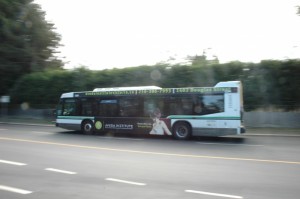BC Transit recently announced they have reinstated 7,000 hours of service to their routes, 5,000 of which are going back into conventional bus lines (the other 2,000 hours are going to handyDART lines).
Students are affected by busses passing them by on a regular basis, and that’s the main problem that BC Transit is trying to resolve by reinstating the hours, according to Maureen Sheehan, director of sales and marketing, although she adds that it will not be enough to totally eliminate the pass-up problem.
“We do not expect to completely eliminate pass-ups,” says Sheehan, “and ask our customers to be patient as our operations team makes the best possible use of the additional 5,000 hours.”

Edward Pullman, Camosun College Student Society (CCSS) clubs and events coordinator, says that the pass-up issue has been affecting students at Camosun and UVic for over eight years.
“There just isn’t enough funding in the system right now to accommodate the service hours that we need,” says Pullman.
And while BC Transit are putting 5,000 hours back into the conventional system, CCSS external executive Madeline Keller-MacLeod isn’t so optimistic that this addition will even begin to cover the needs of the students.
“They are just adding 7,000 hours back into transit that were cut in 2010,” she says. “But all 7,000 hours were cut from the conventional transit system. Now, 5,000 are going back into the conventional system, and 2,000 went into the handyDART.”
Keller-MacLeod says that while it’s a good thing that handyDART also got hours added to the line, it still adds up to hours missing from the conventional route.
“There were pass-ups in 2010 when we had 7000 hours taken away, and now we are only getting 5000 back,” she says. “We would need closer to 20,000 hours to adequately address the pass-up issues for students.”
According to Pullman, the pass-ups are not the only issue with BC Transit that affect students. Another key problem is that buses are getting slowed down in traffic, which deters people from wanting to ride them. This is a problem that needs to be remedied if we want to see an increase in user satisfaction, he says.
“The best way to do that is dedicated busways on major routes like Douglas, McKenzie, and Hillside at key hours when traffic is heavy,” says Pullman. “Because, quite frankly, we are not really giving people much of an incentive to take the bus if the bus is stuck in traffic with everything else.”
BC Transit recognizes the issue of congestion and say they are making an effort to identify key problem areas and improve upon them. Sheehan says they are leading a transit priority study with the region’s road authorities to identify and improve on problematic areas.
“The study will look at transit priority on Highway 1, Highway 17, Douglas, McKenzie, and the Island Highway,” she says. “To improve efficiency, transit priority should help us move passengers faster and free up service hours and buses to apply where demand warrants.”
As for the pass-ups, even those who are not getting passed are seeing the negative repercussions of the lack of readily available transit service for students.
“I usually get on at the very beginning of the number 4 [route], which is why I don’t get passed up, but I watch people get passed every morning,” says second year university transfer student Michaela Delong, who watches the bus get busier and busier along its route.
“It’s packed,” says Delong, “which is uncomfortable, but you’ve got to get to school some way.”

